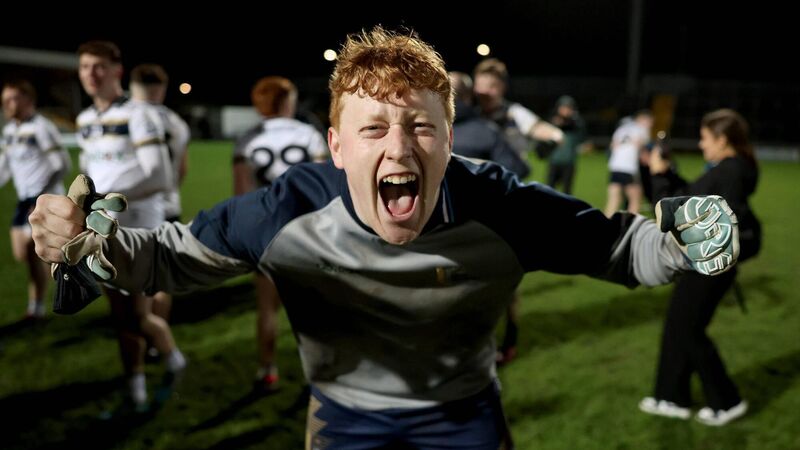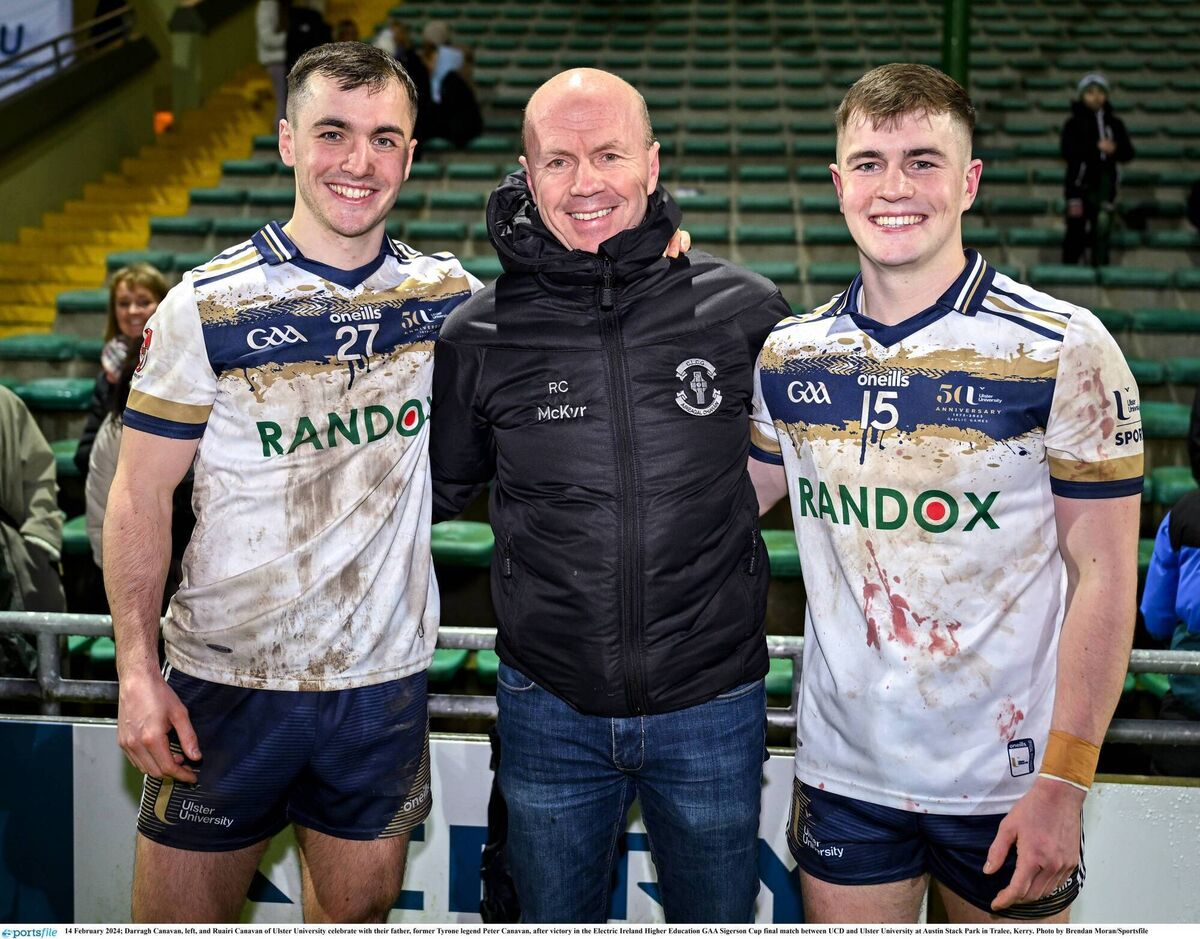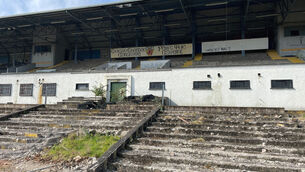Paul Rouse: A love letter on behalf of Sigerson Cup players

SWEET MEMORIES; Ulster University keeper Ronan McGeehin celebrates after the final in Tralee. Pic: Morgan Treacy, Inpho
For more than two decades, Dave Billings ran the GAA club in UCD. He was fond of quoting a few lines of the poetry of William Wordsworth to remind everyone of what really mattered in a third-level GAA club:
“Bliss was it that dawn to be alive, But to be young was very heaven.”
And he expounded on this further when he wrote an article in 2011 to commemorate the centenary of the founding of the Sigerson Cup: “‘The Sigerson Cup is more about memories than medals. Long after student days are over the mention of the Sigerson Cup recaptures the days of our youth, of teammates who you would die for on the field and they for you. In these memories, we stay eternally young. Time moves on, of course, but in the mind it is not the grey-haired middle-aged man that you see in front of you; rather it is the dashing, young athletic man in his prime, on the field of play.”
On Wednesday night, UCD lost the Sigerson final to University of Ulster and it was a massive disappointment, one that will linger for a very long time. It's not easy to be philosophical after losing a final. It would be much better to have the memories and the medals.
By contrast to the misery experienced by UCD, the UU players were absolutely elated at their success. And rightly so.
It was all a reminder that the Sigerson Cup still matters. This is no small achievement. The GAA changes all the time. Competitions that once held sway slip away into the night where once they were central to the association. The Croke Cup is barely remembered; the Railway Cup is lost in a fog of history.
As Eugene McGee, coach to seven winning Sigerson teams in UCD from 1968 to 1979, once wrote: “One thing that can definitely be said about the Sigerson Cup competition is that it has stood the test of time admirably. As the second oldest national competition after the GAA championships themselves, the Sigerson has survived two World Wars, a Civil War, the conflicts in the Six Counties and numerous political upheavals of a less dramatic nature.”
It has seemed on occasion that the Sigerson Cup was doomed. Its place in the calendar was unclear. It is ironic that despite the number of students attending third-level colleges never being greater, the fate of inter-collegiate competitions was thrown into doubt.
The fact that the academic year begins in September and ends in May places obvious constraints on when the Sigerson Cup can be played. After its inception, the competition was usually played in February or March.

This was changed in the 1920s and the tournament played in November and December. An outbreak of foot-and-mouth disease in the autumn of 1967 saw the Sigerson Cup revert to being played after Christmas. Usually, this meant February and March.
The timing of the competition is essential to understanding its impact as an arena for developing players. The tradition of playing in the wet and cold is fundamental to the nature of the competition. It is true that pitches have greatly improved, but the physical and mental strength required to compete in the type of game that is played is unchanged.
Some inter-county managers see it as a great opportunity for players to progress and improve in the company of outstanding players from other counties.
By contrast, other managers see the Sigerson as an impediment to their Allianz league hopes. Both can be right in their own way.
What matters here, though, is the players. For many top-quality Gaelic footballers who attend third-level, it is something that is a vital part of their college experience. It binds them into an institution and gives them a social circle that is extremely valuable.
Allowing for the pressures of the split season and the remarkable burdens on inter-county players, they continue to make huge efforts to play.
Why is this?
The first and most important reason is that the players love playing in the games. It is a unique thing to get to share a dressingroom and make a team with players from rival counties. When this is put beside the nature of the games that are played – hectic, physical, often open, sometimes reckless – you can see why they love it.
The second reason is that playing at third-level has a great habit of propelling players forward in their careers. This is true for players who arrive in college as relative unknowns. And it is also true for those who had impressive underage careers.
Look at what happened in the Fitzgibbon Cup, for example. It is not difficult to believe that captaining Mary Immaculate College to win the Fitzgibbon in 2015-2016 was a key step for Richie English. Declan Hannon was top-scorer and man of the match in that victory. The following year – when Mary Immaculate College won the competition again – Cian Lynch won man of the match in the final. Mary Immaculate benefitted from an influx of brilliant Limerick hurlers and those hurlers, in turn, benefitted from their time with Mary Immaculate.
And the best of it is that the experience is now open to so many more players than ever before. For two decades after its foundation in 1911, the Sigerson Cup was almost always played in a league format between three teams: UCD, UCC and UCG. They were joined in 1933 by Queen’s University Belfast and the Sigerson became a straight knock-out competition. This remained the case until 1963 when Trinity entered. This meant adding a quarter-final to the tournament.
In the 1970s, NUI Maynooth and the University of Ulster were added, and then in the 1980s and 1990s, the number of third-level institutions taking part more than doubled as Jordanstown (later part of the University of Ulster), Thomond, NIHE Limerick (later University of Limerick), St. Mary’s Belfast, and the Regional Technical Colleges (RTCs, which later became institutes of technology and then some again became technological universities) got involved.
There is one other aspect that matters – and it has nothing to do with winning or even about developing as a player; it is about the fun of it all and about seeking a new experience.
To see so many brilliant footballers from different counties come together to make a team is a wonderful thing. It was an absolute privilege to be involved. There is pain in loss and that pain will stick.
Congratulations to University of Ulster.








